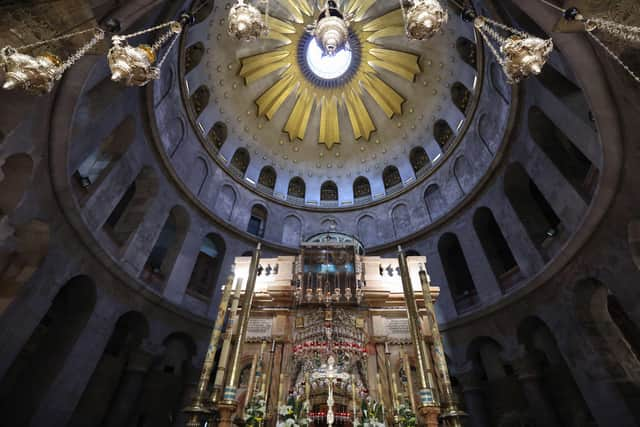What is the Tomb of Christ in Jerusalem and is it really where Jesus of Nazareth was buried?
This article contains affiliate links. We may earn a small commission on items purchased through this article, but that does not affect our editorial judgement.
and live on Freeview channel 276
The mysteries of the past and the miracles mentioned in religion have formed the backbone of faith and belief for centuries - if not millennia. And a very special tomb in Jerusalem's Church of the Holy Sepulchre is at the centre of one of the greatest stories.
Over the centuries, the church has been attacked, survived fires, and even contested with earthquakes. All this has created doubt as to whether this could indeed be where Jesus of Nazareth was buried in the first century.
Advertisement
Hide AdAdvertisement
Hide AdThe recognised history of the site dates back to 17 centuries ago when a delegation from Rome was sent to site in the year 326.
And now, in unprecedented news, scientific tests seen by National Geographic seem to confirm that the remains of a limestone cave enshrined within the church are indeed remnants of the tomb located by the ancient Romans.


What is the Tomb of Christ?
The recognised story of the tomb dates back to the Emperor Constantine (272 - 337) of the Raman Empire. He was the first emperor to convert to Christianity and made the persecution of Christians illegal.
While some have said that he converted for political reasons, he is also said to have had a divine vision from the Christian god before winning a pivotal battle.
Advertisement
Hide AdAdvertisement
Hide AdHis representatives were sent to Rome around 325 to locate the tomb, where they are said to have been pointed to a Roman temple built around 200 years before.
The Roman temple was excavated and a tomb was revealed that was made from a limestone cave. The top of the cave was sheared off to expose the interior of the tomb, and the Edicule was built around it.
A feature of the tomb is a long shelf, or "burial bed," which according to tradition was where the body of Jesus Christ was laid out following crucifixion. Burial beds were a common feature in tombs of wealthy 1st-century Jerusalem Jews.


The marble cladding that covers the "burial bed" is believed to have been installed in 1555 at the latest, and most likely was present since the mid-1300s, according to pilgrim accounts.
Advertisement
Hide AdAdvertisement
Hide AdWhen the tomb was opened on the night of October 26, 2016, experts were surprised to find an older broken marble slab with a cross resting directly atop the original limestone "burial bed."
Is it really where Jesus was buried?
While we may never truly know if this was indeed the place the tomb where Jesus Christ was buried after his death and before his resurrection, the scientific dating of the tomb does match up with the timeline from around 300 years after he is said to have died around AD 30-33.
Mortar samples tested from the site between the original limestone surface of the tomb and a marble slab that covers it have been dated to around A.D. 345. Historical accounts say the tomb was discovered by the Romans and enshrined around 326.
Headlines were made in 2016 when the tomb was opened for the first time in centuries. This was when the shrine that encloses the tomb, known as the Edicule, underwent a significant restoration by a team from the National Technical University of Athens.
Advertisement
Hide AdAdvertisement
Hide AdIt must be said though that it is archaeologically impossible to say that the tomb is the burial site of an individual Jewish man known as Jesus of Nazareth, who according to New Testament accounts was crucified in Jerusalem in 30 or 33.
But new dating results put the original construction of today's tomb complex securely in the time of Constantine, Rome's first Christian emperor.
Test results back up the theory that the lower slab was most likely placed in the mid-fourth century under the orders of Emperor Constantine,
Archaeologist Martin Biddle said: "Obviously that date is spot-on for whatever Constantine did. That's very remarkable."
Comment Guidelines
National World encourages reader discussion on our stories. User feedback, insights and back-and-forth exchanges add a rich layer of context to reporting. Please review our Community Guidelines before commenting.
